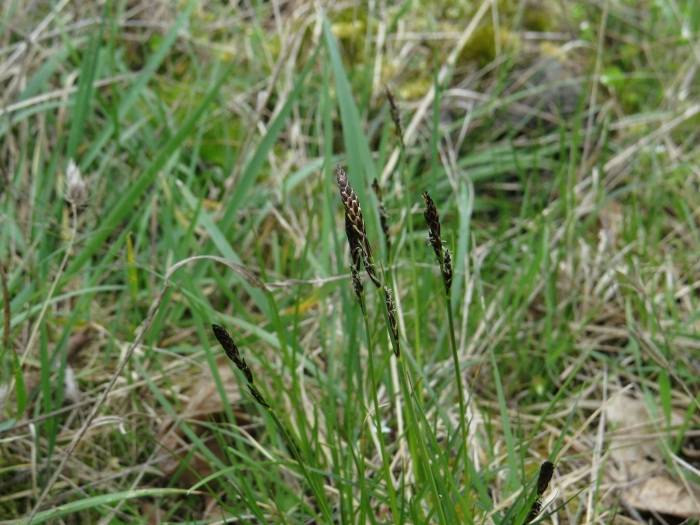Western Oak Sedge
(Carex inops)
Western Oak Sedge (Carex inops)
/
/

© Jack Bindernagel
CC BY 4.0
Image By:
© Jack Bindernagel
Recorded By:
Copyright:
CC BY 4.0
Copyright Notice:
Photo by: © Jack Bindernagel | License Type: CC BY 4.0 | License URL: http://creativecommons.org/licenses/by/4.0/ | Uploader: jbindernagel | Publisher: iNaturalist |


















Estimated Native Range
Summary
Carex inops, commonly known as long-stolon sedge and western oak sedge, is a perennial herbaceous plant primarily found in the understory of dry to moist forests, open woodlands, and meadows across northern North America. It is native to a range of habitats from southern Canada to the western and central United States. Carex inops subsp. inops is specifically adapted to the west coast’s climate, from British Columbia to California, while Carex inops subsp. heliophila, or sun sedge, is more common east of the Rocky Mountains, thriving in prairies and meadows. This sedge typically forms a loose clump of stems up to 20 inches tall, with stiff, narrow leaves that persist around the base, and it grows from rhizomes and fibrous roots. The plant is not particularly showy but is valued for its adaptability and the textural quality it adds to plantings.
Long-stolon sedge is appreciated for its ability to stabilize soil and provide good forage for livestock. It is often used in restoration projects, naturalized areas, and as a ground cover in shaded gardens. It prefers partial to full shade and can tolerate a range of soil types, provided they are well-drained. While it is low-maintenance, it can become invasive if conditions allow for unchecked growth. Regular monitoring and management may be necessary to prevent it from dominating other species in a garden setting.CC BY-SA 4.0
Long-stolon sedge is appreciated for its ability to stabilize soil and provide good forage for livestock. It is often used in restoration projects, naturalized areas, and as a ground cover in shaded gardens. It prefers partial to full shade and can tolerate a range of soil types, provided they are well-drained. While it is low-maintenance, it can become invasive if conditions allow for unchecked growth. Regular monitoring and management may be necessary to prevent it from dominating other species in a garden setting.CC BY-SA 4.0
Plant Description
- Plant Type: Grass
- Height: 1-2 feet
- Width: 1-2 feet
- Growth Rate: Moderate
- Flower Color: N/A
- Flowering Season: Spring, Summer
- Leaf Retention: Evergreen
Growth Requirements
- Sun: Full Sun, Part Shade
- Water: Medium
- Drainage: Medium, Fast
Common Uses
Bird Garden, Deer Resistant, Drought Tolerant, Groundcover, Low Maintenance, Rabbit Resistant, Rock Garden
Natural Habitat
Native to the understory of dry to moist forests, open woodlands, and meadows
Other Names
Common Names: Sun sedge
Scientific Names: , Carex inops, Carex verecunda,
GBIF Accepted Name: